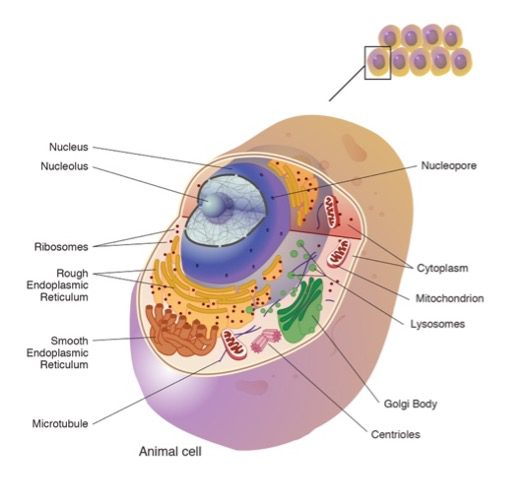Zoom out and think deep
There is often so much focus on anatomy and structure in relation to pain, but let’s not forget about human physiology. Disruptions in homeostasis, may be the underlying mechanisms influencing a pain experience.
We have 11 body systems and none of them can function independently.
That’s right, muscles are not an independent system. Let’s go back to physiology 101 and remember the levels of organisation from atoms to molecules all the way through to ecology.

Atoms form molecules, molecules form cells, cells form tissues, tissues form organs, organs form organ systems, and these organ systems form an organism etc.
Humans are composed of nearly 37 trillion cells and these cells require the appropriate environment and nutrients to function, communicate and reproduce.
It is interesting to zoom in on the structure and function of a cell for a minute.

Each of our 37 trillion cells have tiny organelles that function in energy production, protein synthesis, immune responses, cellular reproduction and removal of metabolic waste. Every thing we do, conscious or subconsioully, requires cellular activity. Every movement, every thought, every breath, and every heartbeat require cellular activity and commination between multiple systems. This also includes, digesting a meal, growth, recovery, and repair etc.
Our lifestyle, mood, emotion, stress, nutrition, sedentary behaviour etc can influence cellular behaviour. Furthermore, If we look beyond the organism level, how we interact with our environment will also influence the levels of structural organisation down to a cellular level.
Could pain by the result of an imbalance somewhere along the levels of structural organisation, as a sequence of events as opposed to an isolated mechanical or structural cause?
Perhaps it is not just one thing that we can put a label on, but an imbalance between our internal or external environment and a failure to appropriately compensate for this change?

As clinicians, it is common to view everything through a single lens e.g. a dysfunctional muscle or joint etc. Perhaps, it is our role to go beyond the physical manifestation of pain to assist our patients to identify contributors to their homeostatic imbalance and assist them in supporting their body’s ability to heal itself and achieve overall wellness?
I hope you enjoy these deeper thoughts 🙂


